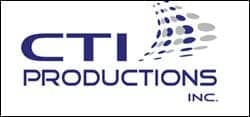By John Noblitt, MAEd, CBET
With the spring testing dates now past, it is time to make a plan for certification in the fall of 2013. As I have written before, to do well on the exam, it is best to begin your studies early in the exam cycle. I would recommend using a 6-month window and to study with increasing intensity as the testing date approaches. One area of the exam where most test-takers seem to struggle is electronics, so let us begin this study cycle with a review of electricity and electronics.
The Laws of Electronics
Any review of electronics must begin with some of the laws, which explain how electricity behaves in electronic circuits. First, we will look at Ohm’s law. Ohm’s law is usually stated as E=I x R where E is voltage, I is current, and R is resistance. All test-takers should be comfortable with Ohm’s law and with using simple mathematics to transpose the formula to find a missing variable. An example would be if you are given the voltage and the current in a circuit, you should be able to find the missing value of resistance. If given any two variables, you must be able to find the missing variable using Ohm’s law formulas.
You must also know how to find the power consumption in a circuit. Remember, the power formulas are as follows: P=I x E or P=I^(2 )R or P=V^2/R. I would not expect you to have a question where you are required to figure power in a circuit, but you very well may have a question that will require you to know these formulas. An example question may be something like this:
The power consumption in a circuit is 15 watts. If the resistance increases by a factor of 10, would the power go up or down?
This is a perfect example of how the test may have fewer calculations but still assess your knowledge of electricity. If you remember your basic electronics course, these power calculations are for linear loads. When you get into AC circuits with inductive and capacitive elements, you must remember power calculations are a little different. When voltage and current are not in phase, as in inductive and capacitive circuits, you must know the “apparent power,” “real power,” and “reactive power.”
These power calculations are expressed as vectors. Vectors have the ability to represent magnitude and direction simultaneously. Since power is a result of current and voltage, and these elements are not in phase in inductive and capacitive circuits, vector analysis must be done to find the power used in the circuit.
The components of AC power are real power (watts), reactive power (VAR’s), and apparent power (VA). The formulas for these units are as follows: real power = (apparent power) cos 0 , reactive power = (apparent power) sin 0 , and apparent power2 = real power2+ reactive power2.
I would not expect anyone to see a question on the exam that would require you to calculate any of these quantities, but you may see a question that will assess your knowledge of these types of power. If I were taking the test again, I would be more concerned with capacitive and inductive reactance and how their phase shifts come into effect in electronic circuits. More on XL and XC can be found in a previous article on electronics in the ICC Prep archives.
This part of the exam is elementary for people who are proficient in electronics, but many others struggle with it. Many times, I have facilitated seminars on the CBET exam and I stress that if Ohm’s law or other simple laws of electricity will provide the correct answer to questions, you must correctly answer them, because you will also see at least one question where you are not even sure what the question is asking.
I hope you find this information useful in your studies to become a CBET. 24×7
John Noblitt, MAEd, CBET, is the BMET program director at Caldwell Community College and Technical Institute, Hudson, NC. For more information, contact [email protected].
|
REVIEW QUESTIONS 1) Apparent power is only calculated in which type of circuit? 2) If voltage on all legs of a parallel circuit reads the supply voltage, this would be indicative of: 3) You have a series circuit with five different resistors. If one resistor opens the voltage across the other resistors, what voltage will your voltmeter display? 4) Vectors can represent which of the following? Answers: 1–a; 2–b; 3–c; 4–b.
|






